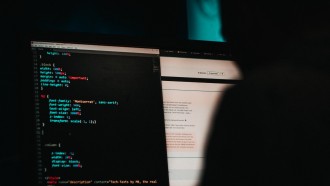Scientists at the Massachusetts Institute of Technology (MIT) have recently unveiled tiny, cell-sized robots that can gather and store data about their surroundings. These miniscule robots are self-powered and are built by combining microscopic electronics and colloidal solutions.
Year after year, scientists are creating new robots that push the limits of robotic technology. From "blind" cheetah robots that can leap over obstacles in disaster areas to the next generation of lunar robots, novel robot designs are changing the landscape of robotics. In addition to new designs, new ways of controlling robots are also being studied. While tiny robots have been proposed and created by other research teams, many of these robots are designed with mobility as a focus. With these new robots, however, mobility is not an issue since their dispersal depends on the natural tendencies of colloidal systems.
Colloids have been a subject of study since the mid-1800s and have proven to have many uses in different fields. Colloids are particles that can be as wide as a micrometer or even smaller. The robots themselves are made using two-dimensional materials and are delivered on-site by hitching a ride on colloids.
"We wanted to figure out methods to graft complete, intact electronic circuits onto colloidal particles," says Michael Strano, one of the senior authors of the study.
The choice of using colloids as a means of creating tiny robots was driven, in part, by the fact that they are easy to disperse in many types of environments. From oil pipelines to human organs, colloidal particles suspended in either liquids or gasses can naturally disperse allowing the robots to gather data and diagnose problems in very hard to reach areas.
"Colloids can access environments and travel in ways that other materials can't," Strano adds. By nature, colloids can remain suspended in their mediums for extended periods of time, which means they can spread over a given area and stay there until scientists and professionals gather the necessary data.
Self-Powered And Fully Autonomous Robots
Another common problem researchers face when trying to design small, autonomous robots is coming up with suitably small power delivery systems. With the new MIT robots, the researchers used tiny photodiodes that produce enough electricity to power the onboard sensors, processing, and storage circuits.
According to Strano and his team, the new robots will have a wide variety of applications, especially in the medical field. Doctors are always in need of new ways to diagnoses diseases and health problems. A patient can simply drink a solution and the robots can gather data about the patient's digestive tract as it passes through. The robots can be used to detect anomalies such as inflammation or other abnormalities within the digestive tract and the doctor can use the data to come up with more accurate diagnoses. The oil industry is another major field where the robots can be deployed. Oil companies often have major difficulties identifying leaks and other problems in pipelines and refineries.
While the current generation of nanoscale robots are still fairly simple devices, Strano and his team are optimistic that the study they conducted can serve as the introduction to a novel field of robotics. The study was published in the scientific journal Nature Nanotechnology.





